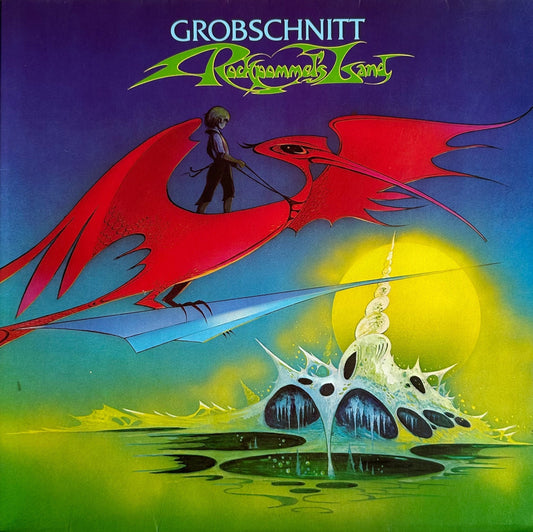Let's start today's post by showing you how easy it is to design an amplifier circuit with an op amp.
When an op amp is used in a circuit as an amplifier, all you need is two resistors, the op amp and a couple of batteries. You can have the op amp amplify as either an inverting or non-inverting amplifier - meaning that whatever signal you put in can have its polarity or phase intact or flipped over - the same way you can reverse the +/- of your speaker terminals.
So let's roll our sleeves up and design a preamplifier together with an op amp. We will want to have 20dB of gain in our op amp, meaning whatever we put into it will come out ten times louder.
So here is what an op amp looks like in a schematic: it's a simple triangle with two audio inputs, one output and the two power supply inputs.

The two audio inputs are marked + (non-inverting if we want to preserve the phase) and - (inverting - if we want to flip the phase over) and the output is, well, the output. Simple eh? You have no idea just how simple this thing is. Let's keep moving.
Here is a drawing of an IC op amp package - a diagram of where each of these terminals are located on the actual device itself. You'll see some other stuff marked on this one - like offset null - don't worry, we won't need to use that or have anything to do with it.

The -V and the +V are the battery inputs and between the two batteries we might use (like a couple of 9 volts) we have what's known as ground - or the center between the two power supplies. Here's what the two batteries tied together might look like and ground is in the middle between the two where it is written "0V".

The picture I grabbed shows 6 volts - but imagine 9 instead - which BTW was exactly the circuit I first used to power the prototype of the PS Audio phono preamplifier - yep, two 9 volt batteries and a couple of op amps in a Roi Tan cigar box for a chassis.
OK, now let's make our preamplifier. I think let's start out making an inverting version, then we'll go tackle a non-inverting one. As I mentioned all we need is two resistors and because the gain of an op amp is set by the ratio of the two resistors, then all I need to do is have one resistor 10 times bigger than the other. So I could use a 1K (1000 Ohms) and a 10K (10,000 Ohms). These are just little bits I could buy at Radio Shack if I wanted - maybe a whole $0.10 each. Here's what our circuit would look like.

We would put the 1K on the in and the 10K between the out and the in. The little triangle symbol you see on the + input is ground (the meeting point between the two batteries). That's it. There's not much more. Just connect an RCA input to the input side and another RCA connector to the output and you're done. Whatever you plug into the input will come out 10 times bigger on the output RCA without any distortion or problem.
If I used quality parts, a PC board to hold everything, a power supply instead of a battery and a fancy chassis I have a commercial preamp. Want a volume control? Just stick a potentiometer on the input and you have it. Want it "high-end"? Use a good op amp and a better power supply and fancy connectors.
But maybe we want to have a non inverting amplifier instead. OK, all we have to do is change where we connect ground up and where the input is. Here, take a look.

See? R1 is our 1K resistor and R2 is our 10K. Simple, no?
But this is a single ended preamplifier - where we can only put in the output of an RCA connector. Let's get super fancy and make it a balanced input amplifier - where you would put in the output of a balanced cable with an XLR on its output - balanced out. We're all familiar with that.
Here's what that would look like - please ignore the values because I just grabbed this off of the internet.

The little symbol that looks like a rake is ground. Cold is the one side of the balanced signal and hot the other.
OK, this is getting lengthy and the purpose isn't to teach you how to design an op amp but just how danged simple it is - and I am not simplifying anything here.
Tomorrow let's see what's inside of these little buggers that makes everything so easy and so widely used.
 The two audio inputs are marked + (non-inverting if we want to preserve the phase) and - (inverting - if we want to flip the phase over) and the output is, well, the output. Simple eh? You have no idea just how simple this thing is. Let's keep moving.
Here is a drawing of an IC op amp package - a diagram of where each of these terminals are located on the actual device itself. You'll see some other stuff marked on this one - like offset null - don't worry, we won't need to use that or have anything to do with it.
The two audio inputs are marked + (non-inverting if we want to preserve the phase) and - (inverting - if we want to flip the phase over) and the output is, well, the output. Simple eh? You have no idea just how simple this thing is. Let's keep moving.
Here is a drawing of an IC op amp package - a diagram of where each of these terminals are located on the actual device itself. You'll see some other stuff marked on this one - like offset null - don't worry, we won't need to use that or have anything to do with it.
 The -V and the +V are the battery inputs and between the two batteries we might use (like a couple of 9 volts) we have what's known as ground - or the center between the two power supplies. Here's what the two batteries tied together might look like and ground is in the middle between the two where it is written "0V".
The -V and the +V are the battery inputs and between the two batteries we might use (like a couple of 9 volts) we have what's known as ground - or the center between the two power supplies. Here's what the two batteries tied together might look like and ground is in the middle between the two where it is written "0V".
 The picture I grabbed shows 6 volts - but imagine 9 instead - which BTW was exactly the circuit I first used to power the prototype of the PS Audio phono preamplifier - yep, two 9 volt batteries and a couple of op amps in a Roi Tan cigar box for a chassis.
OK, now let's make our preamplifier. I think let's start out making an inverting version, then we'll go tackle a non-inverting one. As I mentioned all we need is two resistors and because the gain of an op amp is set by the ratio of the two resistors, then all I need to do is have one resistor 10 times bigger than the other. So I could use a 1K (1000 Ohms) and a 10K (10,000 Ohms). These are just little bits I could buy at Radio Shack if I wanted - maybe a whole $0.10 each. Here's what our circuit would look like.
The picture I grabbed shows 6 volts - but imagine 9 instead - which BTW was exactly the circuit I first used to power the prototype of the PS Audio phono preamplifier - yep, two 9 volt batteries and a couple of op amps in a Roi Tan cigar box for a chassis.
OK, now let's make our preamplifier. I think let's start out making an inverting version, then we'll go tackle a non-inverting one. As I mentioned all we need is two resistors and because the gain of an op amp is set by the ratio of the two resistors, then all I need to do is have one resistor 10 times bigger than the other. So I could use a 1K (1000 Ohms) and a 10K (10,000 Ohms). These are just little bits I could buy at Radio Shack if I wanted - maybe a whole $0.10 each. Here's what our circuit would look like.
 We would put the 1K on the in and the 10K between the out and the in. The little triangle symbol you see on the + input is ground (the meeting point between the two batteries). That's it. There's not much more. Just connect an RCA input to the input side and another RCA connector to the output and you're done. Whatever you plug into the input will come out 10 times bigger on the output RCA without any distortion or problem.
If I used quality parts, a PC board to hold everything, a power supply instead of a battery and a fancy chassis I have a commercial preamp. Want a volume control? Just stick a potentiometer on the input and you have it. Want it "high-end"? Use a good op amp and a better power supply and fancy connectors.
But maybe we want to have a non inverting amplifier instead. OK, all we have to do is change where we connect ground up and where the input is. Here, take a look.
We would put the 1K on the in and the 10K between the out and the in. The little triangle symbol you see on the + input is ground (the meeting point between the two batteries). That's it. There's not much more. Just connect an RCA input to the input side and another RCA connector to the output and you're done. Whatever you plug into the input will come out 10 times bigger on the output RCA without any distortion or problem.
If I used quality parts, a PC board to hold everything, a power supply instead of a battery and a fancy chassis I have a commercial preamp. Want a volume control? Just stick a potentiometer on the input and you have it. Want it "high-end"? Use a good op amp and a better power supply and fancy connectors.
But maybe we want to have a non inverting amplifier instead. OK, all we have to do is change where we connect ground up and where the input is. Here, take a look.
 See? R1 is our 1K resistor and R2 is our 10K. Simple, no?
But this is a single ended preamplifier - where we can only put in the output of an RCA connector. Let's get super fancy and make it a balanced input amplifier - where you would put in the output of a balanced cable with an XLR on its output - balanced out. We're all familiar with that.
Here's what that would look like - please ignore the values because I just grabbed this off of the internet.
See? R1 is our 1K resistor and R2 is our 10K. Simple, no?
But this is a single ended preamplifier - where we can only put in the output of an RCA connector. Let's get super fancy and make it a balanced input amplifier - where you would put in the output of a balanced cable with an XLR on its output - balanced out. We're all familiar with that.
Here's what that would look like - please ignore the values because I just grabbed this off of the internet.
 The little symbol that looks like a rake is ground. Cold is the one side of the balanced signal and hot the other.
OK, this is getting lengthy and the purpose isn't to teach you how to design an op amp but just how danged simple it is - and I am not simplifying anything here.
Tomorrow let's see what's inside of these little buggers that makes everything so easy and so widely used.
The little symbol that looks like a rake is ground. Cold is the one side of the balanced signal and hot the other.
OK, this is getting lengthy and the purpose isn't to teach you how to design an op amp but just how danged simple it is - and I am not simplifying anything here.
Tomorrow let's see what's inside of these little buggers that makes everything so easy and so widely used.








